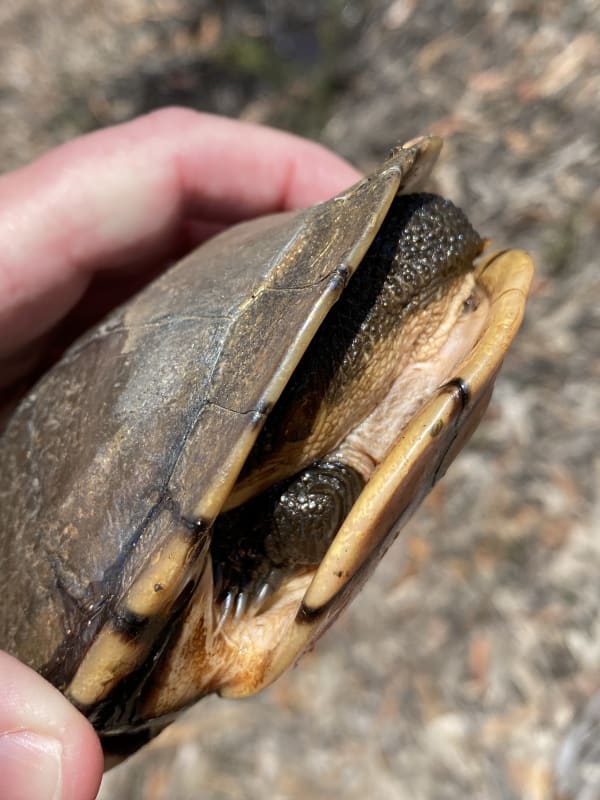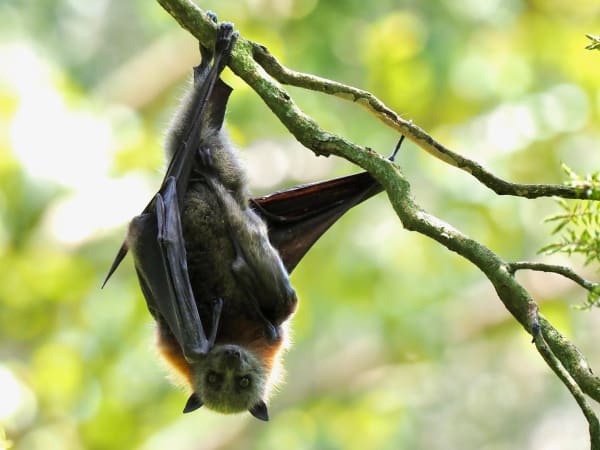Turtles on the move
I've had two turtle-based encounters this week. One I found sitting in a very shallow puddle of what looked to be very polluted water, and the other was meandering along the side of the road. Both of these turtles were Eastern Long-Necked Turtles, also known as Snake-Necked Turtles. These are freshwater turtles and, as the name implies, they have a super long neck, up to half the length of the shell, which is one reason why when they pull their head in, it curves to the side.

I'm a believer in not interfering with wildlife, but the turtle sitting in the oil-slicked puddle? Well, I couldn't leave it there, so gently picked it up and moved it to the other side of the path and into clearer water where it swam away. Pro tip: If you need to help one of these turtles – ie if it's in the middle of the road – keep it at arm's length. They excrete a putrid-smelling odour from their glands, a kind of onion-y smelling liquid. You've been warned.
But the main reason not to interfere with them, and also one of the reasons you may spot a turtle or over the next month or two, is that they're moving to find nesting sites. These sites are usually in soft sand, near water and the female will lay up to 20 eggs, which hatch three to eight months later. If you move a turtle to water, you may have just undone a whole lot of effort to get to the site in the first place!
New pups on the horizon
Who doesn't love a new baby? Especially when they are as adorable as those of the Grey-Headed Flying Fox. These bats give birth to one pup in Spring and I was fortunate enough to spot a few mums and bubs at Blackbutt Forest Reserve this week. They're hard to see at this stage, spending most of their time wrapped up safely in mum's wings. The pups themselves cling on tightly to mum and you often only spot them as mum opens her wings to stretch or to fan herself and her new baby.

The camp at Blackbutt Forest Reserve is home to anywhere from 1000 to 6000 of these special bats, which are listed at a state level as 'vulnerable'. So, every new, healthy pup is an exciting addition. Initially they spend all their time with mum, dependent on her milk, and even head out into the night with her when she goes foraging, clinging on for dear life, no doubt! After a couple of weeks, the pups grow too heavy to be lugged around, and are able to be left alone in the camp overnight. Weaning begins in March, with most pups fully weaned by May.
If you ever spot a flying fox or pup low to or on the ground, it’s really important that it is urgently assessed. And although it is believed that less than 1% of bats carry the Australian Bat Lyssavirus, this virus can be deadly to humans so it’s vital to not touch the animal and to leave it to the experts. Call WIRES on 1300 094 737.
Read more about what to do if you find a sick or injured bat here









